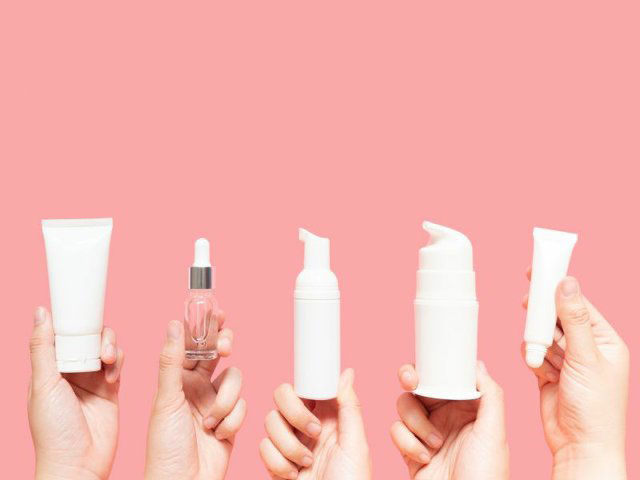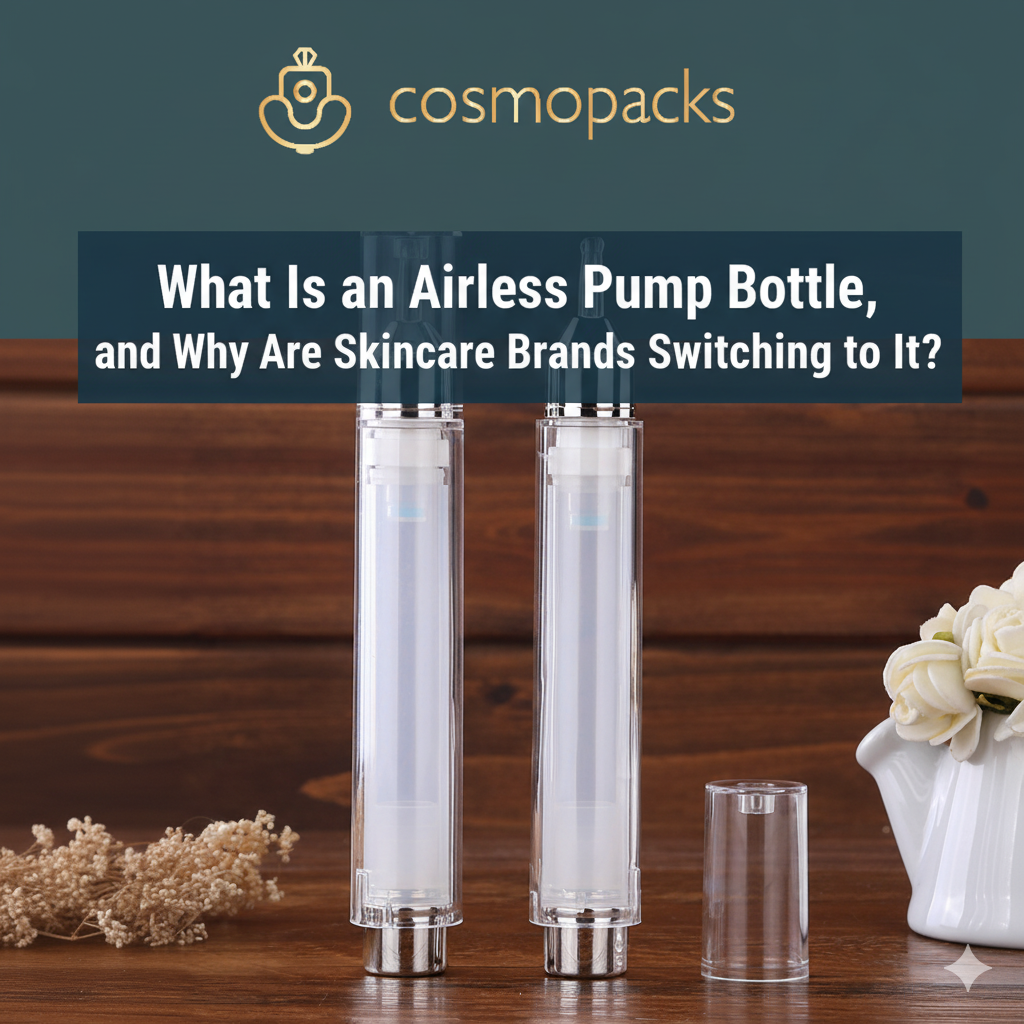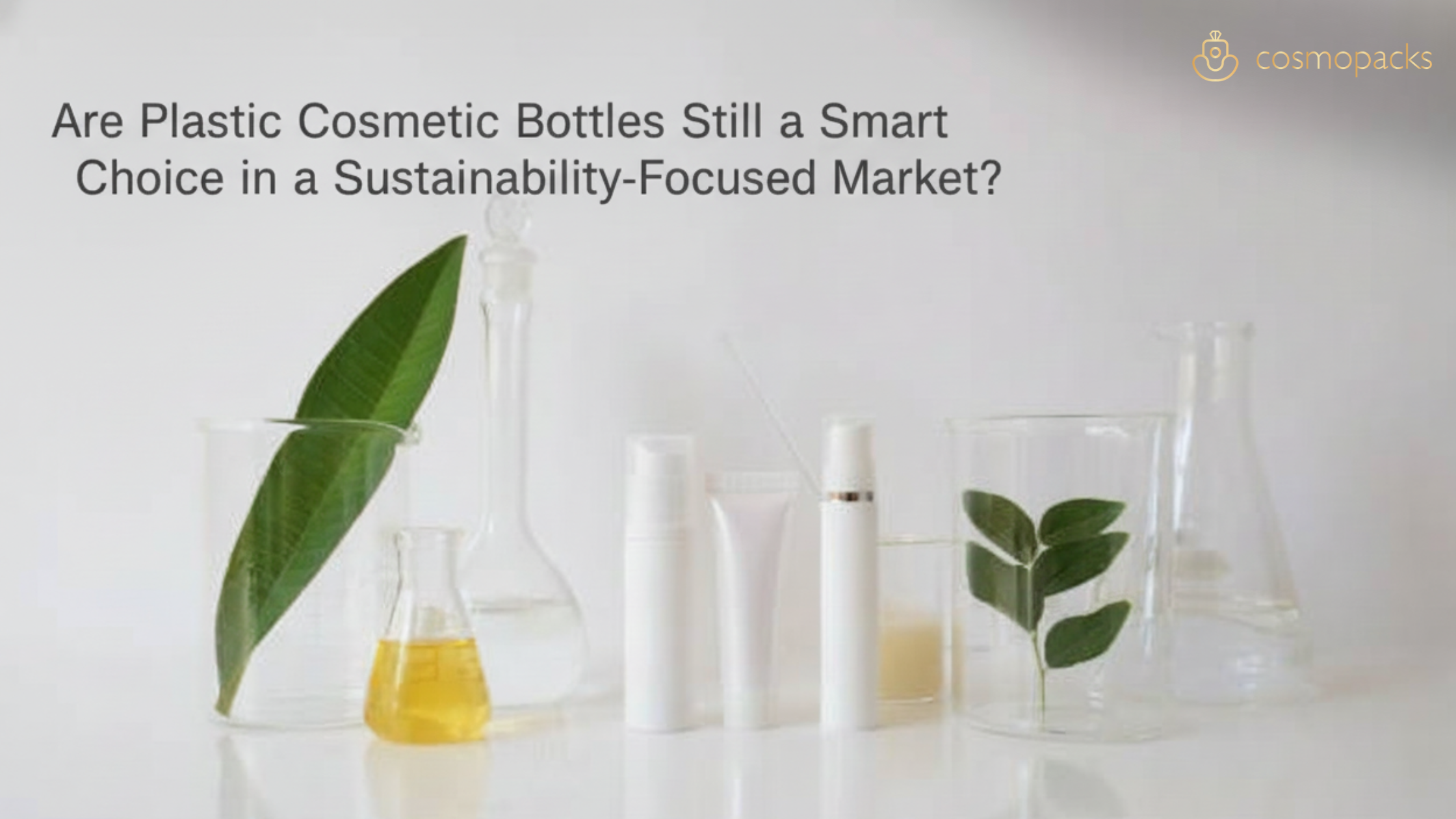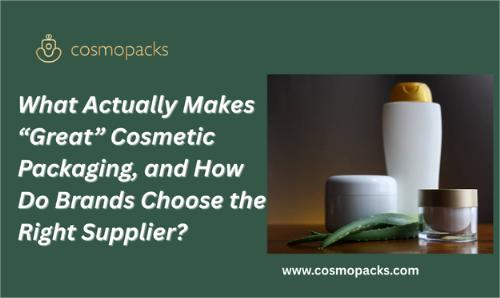As we dive into this guide, you’ll discover the latest trends, innovations, and shifts setting the stage for a new era in skincare branding. 2024 is shaping up to be a revolutionary year for skincare packaging.
From sustainable solutions to tech-infused designs, the best skincare packaging is not just about aesthetics but functionality, user experience, and environmental responsibility. So, what can you expect from the world of skincare packaging this year? Let’s find out in the following.
The Evolution of Skincare Packaging
Skincare packaging has come a long way. Remember the days when skincare products were simply housed in plain plastic containers? Fast forward to today, and the best skincare packaging is a blend of art and science. Over the years, brands have recognized the power of packaging in influencing purchase decisions. From luxury skincare packaging that exudes opulence to cute skincare packaging that appeals to the younger demographic, the evolution has been nothing short of remarkable. And as we look back, it’s evident that every design, every typography choice, and every material used tells a story ane the design has adapted to meet the different needs. Here are some key points of today’s skincare packaging:
- Custom packaging can help skincare products stand out from the competition and communicate the brand’s story.
- Minimalist design and graphics are popular in skincare packaging to highlight the product and create a luxurious feel.
- Multi-sensory experiences, such as textured paper and specialized printing, can create a memorable unboxing experience.
- Functionality is important in skincare packaging, with easy-to-use and hygienic packaging like twist-up sticks and fine mist pumps for solid and liquid products, respectively.
- Refillable packaging is a growing trend in the skincare industry, as it can reduce waste and appeal to environmentally-conscious consumers.
- Soothing facial care products for skin affected by pollution, blue light, and mask-wearing are in demand, and packaging for these types of products should have a ‘no-hands’ application method, for hygienic and on-the-go use.
The design of the packaging is an important part of creating a successful skincare product, and it can determine whether your skincare business will attract new customers and pick up sales.
Key considerations when designing skincare packaging include the age range and sex of the intended consumers, as well as aligning the packaging design with the brand’s colors, personality, and voice.
Why Packaging Matters in the Skincare Industry
Now,think about it. When you’re browsing the beauty aisle, what catches your eye? It’s the packaging, right? Packaging is the first interaction consumers have with a product. It’s the silent salesman on the shelf. The best skincare packaging not only protects the product inside but also communicates the brand’s values, quality, and uniqueness. It’s not just about looking pretty; it’s about ensuring the safety of the skincare product inside, enhancing user experience, and standing out in a crowded market. In a world where consumers are bombarded with choices, the right skincare packaging design can make all the difference.
- First Impressions Count – Packaging is the first thing a consumer sees. A well-designed package can attract attention and make a product stand out on the shelf.
- Protection of the Product – Packaging ensures that the skincare product inside remains uncontaminated and safe to use, protecting it from external factors like light, air, and bacteria.
- Conveys Brand Identity – Packaging reflects a brand’s values, aesthetics, and identity. It tells a story about who the brand is and what it stands for.
- Environmental Responsibility – With growing awareness about sustainability, eco-friendly packaging can enhance a brand’s image by showing its commitment to the environment.
- User Experience – Functional packaging designs, such as easy-to-use dispensers or non-drip bottles, enhance the user’s experience with the product.
- Information Conveyance – Packaging provides essential information about the product, including ingredients, usage instructions, and expiration dates.
- Promotes Brand Loyalty – Unique and aesthetically pleasing packaging can lead to increased brand recognition and loyalty among consumers.
- Differentiation in a Crowded Market – With so many skincare products available, unique packaging helps a brand differentiate itself from competitors.
- Safety and Compliance – Packaging ensures that products comply with safety regulations, especially when it comes to transportation and storage.
- Promotion and Marketing – Packaging plays a crucial role in marketing campaigns and promotions, acting as a silent salesperson on store shelves.
- Enhances Perceived Value – High-quality and luxury packaging can elevate the perceived value of a skincare product, allowing brands to position themselves as premium.
- Facilitates Product Use—Packaging designs, like pump bottles or tubes, can make it easier for consumers to use the product without wasting it.
- Reduces Product Wastage – Good packaging ensures that products are sealed tightly, reducing the risk of spillage or wastage.
Packaging matters in the skincare industry because it can increase sales, convey marketing and branding messages, and preserve the product. Attractive packaging can help cosmetic companies attract customers and stand out in a highly competitive industry.
Sustainability: Leading the Charge in 2024
Sustainability isn’t just a buzzword anymore, it’s a movement. And in 2024, it’s leading the charge in the skincare industry. Brands are now more conscious than ever about their environmental footprint. From using recycled materials to adopting eco-friendly packaging options, the shift towards green is evident. Glass bottles, once a luxury, are now becoming mainstream as brands recognize their recyclable nature. But it’s not just about the materials; it’s about the entire packaging lifecycle. How is it produced? Can it be reused or refilled? These are the questions brands ask as they strive for the best skincare packaging that aligns with their sustainability goals.
Innovative Materials Making Waves
The skincare industry is buzzing with innovation, especially when it comes to packaging materials. Bioplastics, derived from benewable sources, are making a splash, offering a more sustainable alternative to traditional plastics. Brands are also exploring algae-based packaging and mushroom-derived materials. These aren’t just eco-friendly; they’re a testament to the industry’s commitment to pushing boundaries. The best skincare packaging in 2024 isn’t just about looking good, it’s about feeling good too, knowing that the packaging won’t harm our planet.
The Rise of Minimalist Design in Skincare Packaging
Less is more, they say. And in 2024, minimalist design in skincare and makeup packaging is proving just that. Brands are opting for clean lines, muted colors, and simple typography. But don’t mistake simplicity for lack of creativity.
These designs are sophisticated, allowing the skincare product itself to shine. The emphasis is on clarity and elegance, with a touch of modernity. This trend is not just about aesthetics; it reflects a broader societal shift towards valuing authenticity and transparency in beauty products.
(Check this blog to elevate your brand image with Minimalist Skincare Packaging)
Tech-Infused Packaging: Beyond the Ordinary
Who said skincare packaging was all about the outer shell? With the integration of technology, packaging is getting smarter. QR codes that lead to detailed product information, augmented reality experiences that bring the product story to life, and NFC tags that offer personalized skincare routines – the possibilities are endless.
The best skincare packaging is no longer static; it’s interactive, enhancing the consumer experience in ways we once only dreamed of. Here are some potential examples and possibilities:
- Smart Packaging: Incorporating smart technology, such as NFC (Near Field Communication) or QR codes, into skincare packaging can give consumers access to product information, tutorials, or personalized recommendations through their smartphones.
- LED Lights: LED lights integrated into packaging can create an eye-catching display or provide ambient lighting effects that enhance the overall product experience.
- Temperature Control: Packaging with built-in temperature control features can help preserve the efficacy of certain skincare products, such as serums or creams that require specific temperature conditions.
- Interactive Packaging: Packaging incorporating interactive elements, such as touch-sensitive surfaces or augmented reality (AR) features, can engage consumers and provide an immersive experience.
- Digital Printing: Advanced digital printing techniques can create dynamic and customizable packaging designs, allowing for personalized branding or limited edition releases.
- Smart Sensors: Packaging with embedded sensors can detect and monitor product usage, providing real-time feedback or reminders to consumers.
It’s important to note that while these are potential trends, the actual implementation and adoption of tech-infused packaging in the skincare industry may vary. Brands and manufacturers need to consider the feasibility, cost-effectiveness, and consumer demand for such technologies when incorporating them into skincare packaging designs.
The Role of Transparency in Ingredient and Material Listing
Consumers are more educated than ever, and they want to know what’s in their skincare products and where the packaging comes from. Brands are responding by being more open about their ingredients, sourcing practices, and the environmental impact of their packaging. The best skincare packaging is transparent, both literally and figuratively. It’s not just about listing ingredients, it’s about building trust. It plays an important role in the skincare industry for several reasons:
- Building Trust: Transparency helps build trust with consumers by providing them with information about the products they are using on their skin and hair.
- Meeting Consumer Demands: Consumers are demanding information about the products they use and want to make sure that the ingredients are clean and align with their values.
- Encouraging Sustainable Practices: Transparency in ingredient and material listing can encourage sustainable practices in the industry by holding companies accountable for the ingredients they use and how they are made.
- Providing Information: Transparency allows consumers to make informed decisions about what they put on their skin by providing information about the ingredients and materials used in skincare products.
- Outlining Price: Some companies take transparency to the next level by outlining price, material, and ingredient breakdowns directly on-site.
- Full Disclosure: Transparency is about full disclosure, not just listing ingredients. It includes information about how the ingredients are made and where they come from.
Transparency in ingredient and material listing is becoming increasingly important in the skincare industry. It helps build trust with consumers, meets their demands for information, encourages sustainable practices, and provides them with the information they need to make informed decisions about the products they use.
Personalization and Customization: Making It Personal
In a world of mass production, personal touches stand out. Brands are recognizing the power of personalization and customization in skincare packaging. Whether it’s allowing consumers to choose their packaging colors, incorporating their names into the design, or even selecting specific ingredients for a personalized skincare formula, the industry is shifting towards a more individual-centric approach.
The best skincare packaging in 2024 will be the one that speaks directly to the consumer, making them feel seen, heard, and valued.
The Importance of Durability and Functionality
While aesthetics and sustainability are crucial, durability and functionality remain at the core of skincare packaging. After all, what good is a beautiful package if it doesn’t protect the product inside or is cumbersome to use?
Brands are investing in research and development to ensure their packaging is not only visually appealing but also practical. From easy-to-use dispensers for lotions and serums to secure closures for oils and perfumes, the best skincare packaging marries form and function seamlessly.
Reusability and Refill Systems: The Future of Skincare Packaging?
The throwaway culture is on its way out, and reusability is in. Brands are exploring refill systems, where consumers can keep their original containers and simply refill them when they run out. Not only is this eco-friendly, but it also offers a unique brand experience. Imagine walking into a store, placing your empty moisturizer jar on a counter, and having it refilled right in front of you. It’s experiential, sustainable, and represents the future of skincare packaging.
The Intersection of Luxury and Sustainability
There was a time when luxury meant opulence, often at the expense of the environment. Not anymore. Luxury skincare brands are redefining opulence by incorporating eco-friendly elements into their packaging. Gold embossed logos on recycled paper, gemstone-topped caps on glass bottles, and the luxury skincare packaging of 2023 is where elegance meets responsibility.
Consumer Preferences: What They’re Looking For
In today’s saturated skincare market, consumers are more discerning than ever. They’re not just looking for effective products; they’re seeking a complete package that aligns with their values, lifestyle, and aesthetic preferences. So, what are they really looking for? Let’s break it down:
- Sustainability and Eco-Friendliness – More consumers prioritize the environment in their purchasing decisions. They are drawn to skincare packaging made from recycled or biodegradable materials and appreciate refillable and reusable options. They want to feel good about their purchase and its environmental impact.
- Transparency and Honesty – Today’s consumers are savvy. They want clear, honest information about what’s inside their skincare products. They appreciate packaging that straightforwardly lists ingredients and provides information about the sourcing and manufacturing process.
- Functionality and Convenience – Consumers are looking for packaging that is easy to use and transport. Whether it’s a no-mess dispenser, a travel-friendly size, or a design that allows them to use every last drop of the product, functionality is key.
- Aesthetic and Design – Instagram-worthy packaging is a real factor in today’s market. Consumers, especially younger demographics, are drawn to unique, beautiful packaging that reflects their personal style and is ‘shareable’ on social media.
- Personalization and Customization – Modern consumers value products that feel personal. They are increasingly drawn to brands that offer customizable packaging options, whether choosing the color of a bottle, having their name printed on the label, or selecting specific ingredients for a personalized skincare formula.
- Safety and Hygiene – In a post-pandemic world, safety and hygiene have taken center stage. Consumers are looking for packaging that protects the product from contamination, whether that’s through tamper-evident seals or touch-free dispensers.
- Brand Story and Authenticity—Consumers want to buy from brands they feel a connection with. Packaging that tells a brand’s story—its values, mission, and origin—can be a powerful tool for building this connection.
- Affordability and Value – Consumers may be willing to splurge on skincare, but they still want to feel like they are getting good value. Packaging that feels luxurious but still affordable can be a major selling point.
- Inclusivity – Consumers are increasingly looking for brands that represent and celebrate diversity, and this extends to packaging. Designs that reflect a range of skin tones and identities are becoming more important to consumers.
In a nutshell, the best skincare packaging in today’s market is the one that doesn’t just hold a product—it aligns with the consumer’s values, meets their practical needs, and delights their senses. It’s a tall order, but in a competitive market, it’s what consumers are coming to expect.
How Different Cultures Impact Packaging Design
Skincare is a global industry, and packaging designs reflect a melange of cultural influences. From the minimalist aesthetics of Japanese design to the vibrant colors of Indian packaging, global trends are shaping the way brands present their products. The best skincare packaging is a celebration of this diversity, drawing inspiration from different cultures while staying true to the brand’s essence.
What to Consider When Choosing Skincare Design
When it comes to designing packaging for skincare products, there are many factors to consider. Here are some ideas and trends to keep in mind:
- Show off your product’s personality – Custom packaging can help your product stand out from the competition and communicate your brand’s story.
- Utilize minimalist design and graphics – Many makeup packaging designs use a minimalist approach to highlight the product and create a luxurious feel.
- Consider multi-sensory experiences – Packaging can evoke feelings of luxury and help customers care for themselves. Textured paper, specialized printing, and other design elements can create a memorable unboxing experience.
- Think about functionality – Packaging should be easy to use and hygienic. Twist-up sticks and fine mist pumps are popular for solid and liquid products, respectively.
- Consider refillable packaging – Refillable packaging is a growing trend in the skincare industry, as it can reduce waste and appeal to environmentally-conscious consumers.
To get inspired, you can check out examples of skincare packaging designs from websites like Pinterest, 99designs, and The Dieline. If you want to create custom packaging for your skincare products, you can work with a professional designer or host a design contest to get ideas from designers around the world.
Consider the most popular colors and materials used in skincare packaging design:
Colors:
- Neutral colors like beige, taupe, or soft gray are timeless and versatile options for skincare packaging. These colors create a clean, sophisticated, and minimalist look.
- Purples, blues, greens, oranges, and pinks are just a few of the vivid colors that work to make a statement with luxury cosmetic packaging designs.
- Blue is a popular color for skincare packaging, especially for products that target blue light skin care.
- White is a standard color in cosmetics packaging that can give products a modern feel.
- Pink products have a fun and jovial feel that can elicit interest in even the most reserved customers. Pink works for both youthful and mature products and can bring warmth and joy to your branding.
Materials:
- Refillable packaging is a growing trend in the skincare industry. It can reduce waste and appeal to environmentally conscious consumers. Glass packaging is a popular choice for refillable packaging.
- All-plastic dropper packages with TPE bulbs and PP pipettes are popular for low-viscosity skincare products such as serums and essences.
- Skincare packaging should be easy to use and hygienic. Twist-up sticks and fine mist pumps are popular for solid and liquid products.
When designing skincare packaging, it is important to consider the target audience and brand personality to choose the right colors and materials that align with the product’s purpose and brand image.
Challenges and Solutions in Skincare Packaging for 2024
Every industry faces challenges, and skincare packaging is no exception. From sourcing sustainable materials at scale to ensuring the packaging remains functional and user-friendly, brands have their work cut out for them. But with challenges come opportunities.
Innovations in biodegradable materials, collaborations with local artisans for unique packaging designs, and leveraging technology for smarter packaging are just some of the solutions brands are exploring.
Contact us today if you want to elevate your brand with innovative designs, sustainable solutions, and a commitment to functionality!




